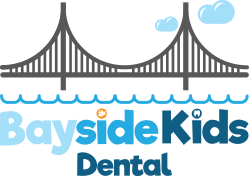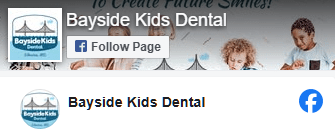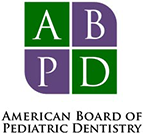
 Have you ever been sitting in the dental chair only to hear your dentist or hygienist at Bayside Kids Dental say a word you’ve never heard before? It’s common for any industry to have terminology specific to the field. But, as a patient, not knowing what your doctor is saying can be confusing. Here are some common (but strange for patients) dental words you may have heard.
Have you ever been sitting in the dental chair only to hear your dentist or hygienist at Bayside Kids Dental say a word you’ve never heard before? It’s common for any industry to have terminology specific to the field. But, as a patient, not knowing what your doctor is saying can be confusing. Here are some common (but strange for patients) dental words you may have heard.
In simple terms, a prophylaxis or ‘prophy’ for short is the professional teeth cleaning. Your hygienist typically performs the prophy during your regular maintenance appointments. He or she will use a special tools to remove plaque, measure pocket depths, take x-rays and polish your teeth.
An arch is the term dental professionals use to describe the upper or lower denture. Or, to describe the bony structure beneath the teeth. Most of the time you will hear them say ‘upper arch’ or ‘lower arch’ to explain the location in the mouth. 6
Caries is another name for cavities. Dental caries and cavities are the terms used to talk about what happens when bacteria cause the teeth to decay. Another synonym you may hear is tooth decay.
Have you noticed DDS after your dentist’s name? DDS stands for Doctor of Dental Surgery. If your dentist has DMD after their name it means they are a Doctor of Medicine in Dentistry. Despite the name difference, the education is the same for either a DDS or DMD, it’s the choice of the university which designation is given.
Gingiva is another word for gums, or the soft tissue surrounding your teeth. You might hear your dentist talk about not brushing the gingiva too hard, or you might hear the word gingivitis, referring to a condition where your gums become infected.
The term interproximal is a fancy way to say: ‘The space between the teeth’. You may hear it referenced if your doctor is explaining where a cavity is forming or where you need to focus cleaning better.
If occlusion refers to the way the teeth line up when the jaw is closed, malocclusion means the teeth are misaligned or crooked when you bite. There many reasons you may have a malocclusion. Your doctor may suggest teeth-straightening, jaw work, bonding, prostheses placement or many other solutions depending on what is causing your problem.
If you have children, you may have heard your doctor mention sealants. Dental sealants are a way for [Name] to provide an impenetrable layer of protection on your child’s back molars. Bayside Kids Dental may suggest sealants if your child has beginning stages of tooth decay or are at risk. By placing sealants, it protects the surfaces of the teeth from cavity-causing bacteria.
Scaling and root planing is a special procedure for patients that need a deeper cleaning because of periodontal disease. Scaling is the removal of tartar from below the gumline. After we remove the tartar, we smooth the underlying tooth root out for the gums to reattach.
Veneers are typically a cosmetic procedure to help patients correct smile imperfections. A veneer is a thin shell of porcelain that we sculpt to replace the smile surface of the tooth. If you have a discolored tooth, damaged tooth, or other imperfection you’d like to smooth out. Veneers can correct many issues. Some patients get full veneers, this is where the entire smile is rejuvenated. The procedure requires etching the natural tooth down a bit, so once you have veneers you need them for life.
| Monday | 8:00am - 5:00pm |
| Tuesday | 8:00am - 4:00pm |
| Thursday | 8:00am - 4:00pm |
| Friday | 8:00am - 4:00pm |

1350 Blair Drive, Suite I
Odenton, MD 21113
(443) 698-8180

1350 Blair Drive, Suite I
Odenton, MD 21113
(443) 698-8180
Please call us at (443) 698-8180 or fill out the form below to request an appointment.
"*" indicates required fields



